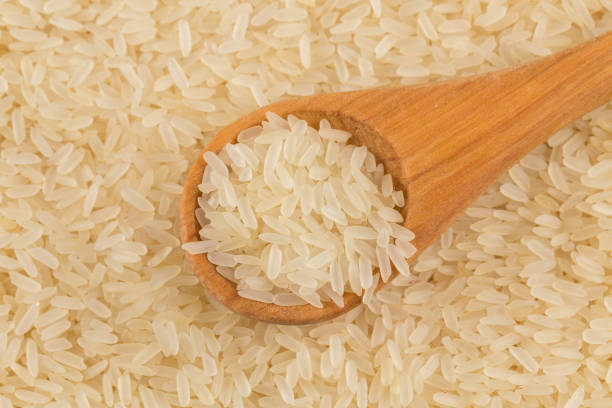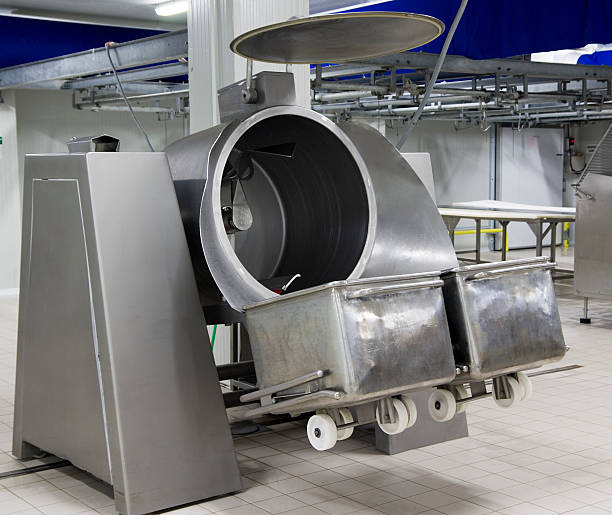Introduction – Bangladesh’s Non Basmati Rice Market in Statistical Focus
Bangladesh, often referred to as the “Land of Rice”, plays a vital role in the global rice economy. While Basmati rice often steals the spotlight, Non Basmati Rice forms the backbone of Bangladesh’s domestic consumption and export potential. With over 39.1 million tonnes of rice produced in 2022–23, Bangladesh stands tall as the third-largest rice producer worldwide, trailing only China and India.
But here’s the twist — despite such massive production, Bangladesh has historically imported more rice than it exported. However, this trend is slowly shifting. Government initiatives and global market dynamics are nudging the country toward becoming a serious contender in Non Basmati Rice exports.
So, why should buyers care? Because data drives better deals. Whether you’re a wholesaler, distributor, or procurement manager, leveraging market statistics and supplier performance data is your golden ticket to smarter sourcing. And platforms like Freshdi allow you to access real-time RFQs, supplier verification, and trade insights that can transform your procurement strategy.
Let’s dive deeper into the numbers and the top players powering Bangladesh’s Non Basmati Rice export scene.
Deep Dive – Key Production, Export Statistics & Demand Insights
Bangladesh’s rice production cycles are built around three seasons:
- Aman – Monsoon season crop
- Aush – Pre-monsoon crop
- Boro – Dry season crop, the most productive
Among these, the Boro season contributes the lion’s share of the nation’s rice harvest, thanks to controlled irrigation and fertilizer usage. It’s not just quantity, though — Bangladesh’s Non Basmati Rice varieties are known for their affordability, texture, and suitability for bulk consumption in Asia, the Middle East, and Africa.
Key Stats at a Glance:
- Production (2022-23): 39.1 million tonnes
- Export Volume (2023): Limited but growing; e.g., 50,000 tonnes exported to Sri Lanka
- Import Volume (Feb 2023–Jan 2024): 262 shipments (mostly from India, Thailand), marking an 85% drop YoY
This decline in imports suggests rising self-sufficiency and possibly a ramp-up in export readiness. According to Freshdi’s RFQ trends, there’s a noticeable uptick in international interest in Bangladeshi Non Basmati Rice, particularly from African and Middle Eastern buyers.
Top 7 Verified Non Basmati Rice Suppliers in Bangladesh – Leading Exporters by Volume
If you’re looking to source Non Basmati Rice from Bangladesh, these are the top-performing, Freshdi-verified suppliers in July 2025. They’ve been selected based on export volume, buyer feedback, certifications, and trade history.
1. Jamirul Islam
One of the most consistent exporters, Jamirul Islam is known for high-volume shipments and timely order fulfillment. Regularly featured in Freshdi’s “Exporter of the Month.”
2. M/s Masud Enterprise
A seasoned supplier with a strong foothold in the Middle Eastern market. Offers both bulk and retail packaging options.
3. M/s. Jubayer & Brothers
Popular for competitive pricing and consistent quality. Often featured in Freshdi’s supplier spotlight for top-tier service.
4. Mahadi Hasan
With a reputation for supplying to Africa and Southeast Asia, Mahadi Hasan is known for high-grade parboiled Non Basmati Rice.
5. Brothers Masrum Co
Focused on sustainability and fair trade, this supplier’s practices appeal to ethically conscious buyers.
6. Prithibi Chinigura Rice
Although known for its aromatic rice, this supplier has diversified into high-demand Non Basmati segments.
7. Saurabh Shop
A rising star in the export scene, Saurabh Shop is known for quick response times and excellent post-shipment support.
🔄 Dynamic Ranking Note: Rankings on platforms like Freshdi may shift monthly based on performance metrics such as export volume, buyer ratings, and trade responsiveness. Always check for “Supplier of the Month” for the latest updates.
Market Navigation – Statistical Trends, Price Insights & Export Dynamics
The Non Basmati Rice market in Bangladesh isn’t static — it’s shaped by seasons, policies, and global events.
Seasonal Demand & Pricing
- Pre-monsoon (May–June): Prices tend to dip due to fresh harvests
- Post-monsoon (August–September): Prices rise due to flood risks and lower yields
- Winter (December–January): Stable prices, ideal for bulk procurement
Policy Impacts
- The lifting of India’s export ban in September 2024 and the imposition of a minimum export price ($490/tonne) has shifted demand toward Bangladeshi suppliers who offer competitive alternatives.
- In August 2025, Bangladesh floated a tender to import 0.9 million tonnes, indicating strong domestic demand and potential price stabilization.
RFQ Trends from Freshdi
- Highest inquiries from UAE, Saudi Arabia, Nigeria, and Malaysia
- Key variants in demand: Parboiled rice, IR-64, Swarna, and coarse Non Basmati Rice
- Bulk orders are trending for government procurement and institutional supply
Conclusion – Leveraging Data for Informed Procurement
Bangladesh may not yet be a rice export giant like India, but it’s certainly gaining ground in the Non Basmati Rice segment. With a massive production base, improving infrastructure, and verified exporters on platforms like Freshdi, the country is fast becoming a go-to sourcing hub.
When choosing a supplier, don’t just go by hearsay. Use data. Look at:
- Export volumes
- Buyer reviews
- Certifications
- Responsiveness to RFQs
And if you’re short on time? Just head over to Freshdi, filter by region, product type, and supplier rating, and get a curated list of the best exporters — like the ones featured above.
Key Takeaways
- Bangladesh is the 3rd largest rice producer globally, with a focus on non-basmati varieties.
- The country is shifting from being an importer to an emerging exporter.
- Verified exporters like Jamirul Islam and M/s Masud Enterprise are leading the charge.
- Freshdi helps buyers with supplier verification, real-time RFQs, and trade data.
- Seasonal trends and policy shifts play a crucial role in pricing and availability.
Checklist for Buyers – Sourcing Non Basmati Rice from Bangladesh
✅ Check supplier export history on Freshdi
✅ Compare seasonal price data before placing bulk orders
✅ Verify certifications and shipping timelines
✅ Align RFQ submission with harvest seasons (Boro = best yields)
✅ Monitor policy updates from India and Bangladesh affecting rice trade
Future Outlook – Bangladesh’s Non Basmati Rice Export Potential
With growing global demand for affordable, bulk rice varieties and India’s fluctuating export policies, Bangladesh is poised for growth. Investments in irrigation, quality control, and export logistics could turn this self-sufficient producer into a regional export powerhouse.
Digital platforms like Freshdi will play a key role in this transformation by offering transparency, trust, and trade intelligence — everything buyers need to make smart sourcing decisions.
FAQs
1. Why is Non Basmati Rice from Bangladesh gaining popularity?
Because it’s affordable, available in bulk, and comes with improving quality standards, especially from verified exporters.
2. What’s the best time to buy Non Basmati Rice from Bangladesh?
Right after the Boro harvest season (March–April) when supply is high and prices are competitive.
3. How can I verify a supplier from Bangladesh?
Use platforms like Freshdi to check supplier ratings, certifications, and trade history.
4. What are the most exported Non Basmati Rice varieties from Bangladesh?
Parboiled rice, coarse rice, and IR-64 are among the most popular for export.
5. Can I place small trial orders before scaling up?
Yes! Many suppliers on Freshdi accommodate small MOQ (Minimum Order Quantity) requests for new buyers.
References
- Wikipedia – Rice Production in Bangladesh
- Volza – Non Basmati Rice Imports
- Financial Express – Bangladesh Rice Tender
- Dhaka Tribune – India Lifts Export Ban
- Reuters – India Export Policy Update
- Reuters – Global Rice Prices Drop
- Reuters – Indian Export Barter Smuggling





